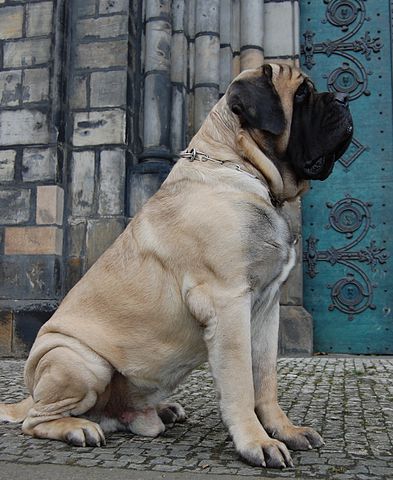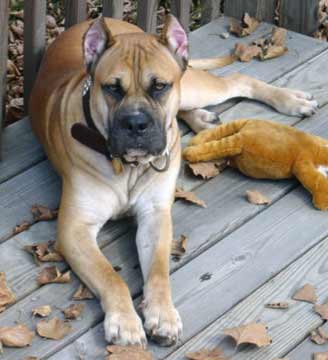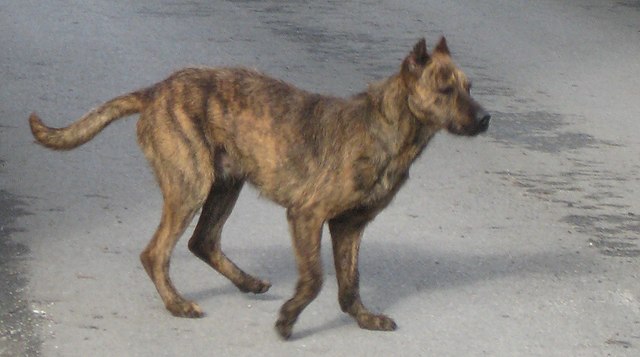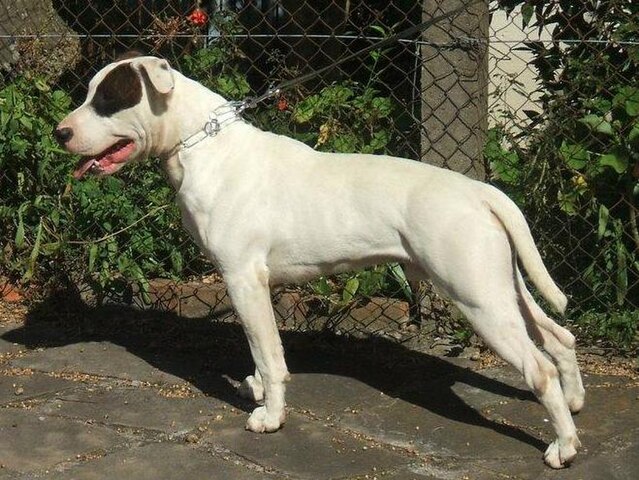The Mastiff is one of the largest breeds in the word. With no upper height limit nor a weight range listed in the standard, they can get downright huge! For this reason alone, it is important that anyone who is thinking about owning one be prepared to put in the work needed in order for their dog to be a well-mannered member of society.
Despite their incredibly intimidating appearance, these dogs are generally not aggressive. In fact, they are loyal and faithful to their human families, gentle with children, and calm around strangers. Most of them get along well with other dogs although some males have issues with other males. Because of their size, it is supremely important to socialize them around as many animals and people as possible while they are puppies. It is much easier to teach a 20 pound puppy to “play nice” than it is a 200+ pound adult! While aggressive behavior is not generally seen in the breed, it does happen from time to time and usually stems from either bad genetics, a learned response or poor socialization.
A well-trained Mastiff is a joy to live with but the real fun comes with training specifically for the various dog sports. Some activities that you can participate with your Mastiff include carting, obedience, nosework, therapy work, tracking, conformation, weight pulling, agility, barn hunting, freestyle, rally… even coursing! Mastiffs are intelligent animals that love to please their owners, but can be sensitive to certain types of training. Sometimes that sensitivity comes across as stubbornness, so it is important to be able to tell the difference. It helps to have a trainer who is familiar with molosser breeds. Dealing with real stubbornness is different than dealing with a dog who is simply confused or frightened.
Some people are drawn to this breed thinking that a Mastiff would be a great home protection dog. This is both true and untrue. While they look very fierce and frightening, they are actually quite gentle in nature. That said, their looks along with their loud bark will deter almost any would-be-intruder. For intruders that do come into the house… it really depends on the individual dog and situation as to whether or not they might defend their home. If a family member is being threatened, however, a Mastiff will almost certainly come to the aid! They will defend their owners if they sense that “their people” are being threatened!
Like most breeds, Mastiffs do not do well being left outside all of the time. They need to be with their families, otherwise, they may become bored and destructive. They make very good house companions anyway, so there really is no need to keep them chained up outside! Mastiffs are quiet, easy keepers that aren’t terribly active. The biggest downsides are that they do tend to drool, as well as snore.
Mastiffs can also be diggers, and they can dig a deep hole much quicker than a dog half their size, should they feel like it. Because of this, they probably aren’t the best choice for those with prize lawns. That aside, they aren’t terribly active outdoors either. A short romp is usually enough for most adult dogs, although puppies might want to play a bit longer. It should be noted that Mastiffs stay in their puppy stages much longer than other dogs. A Mastiff isn’t considered done growing (mentally or physically) until about three years old.
They do require exercise, but it is minimal. When left to their own devices, many would prefer to lounge around most of the day but that doesn’t mean they shouldn’t go out for walks. Be careful not to over-exercise younger dogs (up to 18 months), as it can strain their joints and cause future problems.




